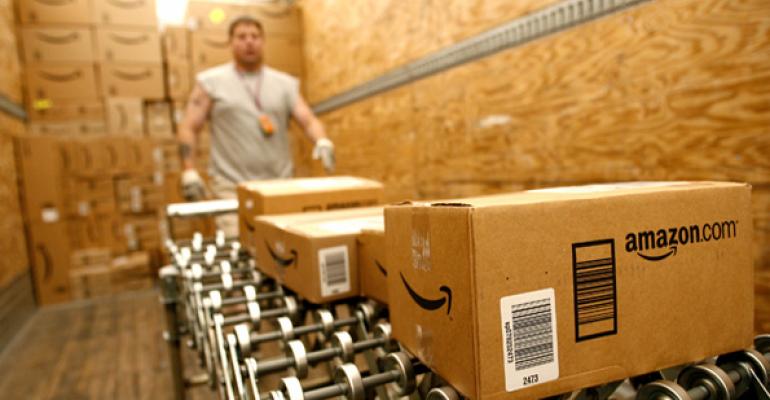After rising to the top, in retail store battles, major chains such as Best Buy and Barnes & Noble are still planning to cut hundreds of stores in 2013—but with the help of the e-commerce boom, the supporting industrial market has emerged strong this year with declining vacancy and modest rent growth in most markets.
Regardless of the destruction it’s causing to the bricks-and-mortar retail industry, e-commerce development helped prevent the downfall of the national industrial market. Global e-commerce is expected to double to $1 trillion in three years, with Amazon taking at least a quarter chunk of that market. Demand for new distribution centers today is strongest around the ports, but is also expanding in major population centers such as large cities in California, Texas, New York and New Jersey, as Amazon and other large retailers prepare massive distribution facilities to reach local online shoppers, according to Cushman & Wakefield’s 2013-2016 Industrial Forecast Report.
Amazon has continued to announce large new distribution facilities around the globe. Just in January, the Seattle-based firm said it signed lease agreements to fill three new fulfillment centers in Texas, one in Robbinsville, N.J. and one in Tracy, Calif., in the San Francisco Bay area. Each of the centers is being built at more than 1 million sq. ft. Amazon isn’t looking weak, either, reporting a record high stock price of $284 per share on Jan. 25, even with the firm beginning late last year to charge customers sales taxes in states that were previously exempt.
Kris Bjorson, Jones Lang LaSalle’s head of retail and e-commerce distribution, says that as Amazon continues its lead, other major retailers are going to fall in line with the new supply-chain model. Companies like Home Depot, Target and Walmart are evaluating their three-to-five year multichannel strategies, he notes. “They have to consider, do customers like coming into our stores or going online or coming into the store and then going online, etc. Where is the customer putting most of his or her money into this process?” Bjorson says.
However, as opposed to Amazon’s brand new model, these companies already have the industrial supply chain in place, and they will have to evaluate how to alter that model, particularly how to rework distribution facilities to meet the likely-coming consumer demand of same-day delivery on all products. Challenges to changing over these existing distribution centers include a shortage of trained workers for the more automated processes, adding truck traffic and parking to meet increased shipping demands, and retooling the building’s insides to handle single-item picking,” Bjorson says.
“It all comes down to the utilization of cubic feet in the same amount of space,” he explains. “The new trend in retooling these centers is to add one or two tiers of work levels, that’s why you’re seeing the demand for at least 36-ft. clear buildings, it enables three levels of conveyer belts for unit-picking onto shipping trucks.”
Top shipping firms UPS and FedEx also predict this trend, according to JLL’s 2013 Retail Perspectives report. The companies are testing strategies for the same-day delivery model, and FedEx predicts that potential industry-wide revenue from intra-city delivery of small packages could rise to $12 billion.
While new development and retooling are the current trends, Bjornson believes that what will follow will likely be more collaboration between vendors and suppliers and whomever has the most modern warehouse holding the product. “I think you’ll see more re-orientating of the network to be more cost-efficient,” Bjornson says. “E-commerce leaders may start to acquire boutique retailers to enter the physical market, and on the industrial side you’ll see the absorption gap widening between class-A, modern buildings with employee and population density and the rest of the country.”

